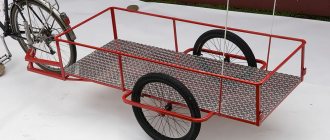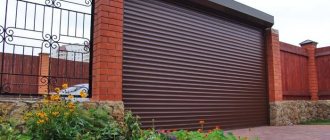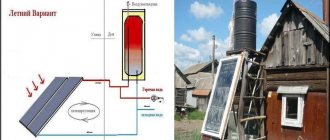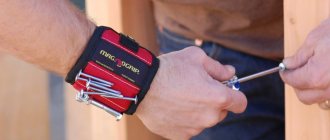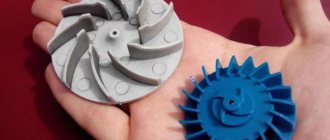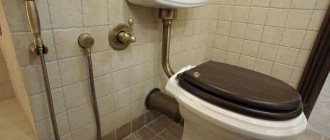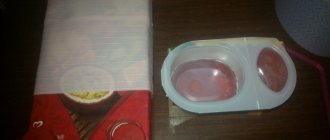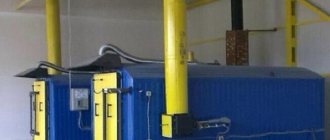How to make a water filter yourself
In every home there is an unnecessary bucket, pieces of pipes or hoses.
If you are a fan of experiments and are willing to put in a little effort, then you can make a simple and cheap modification to a simple vacuum cleaner. We offer easy-to-execute work options. They do not include the manufacture of a separate filter. This modification, when done independently, is more complex and will require additional elements and skills in handling equipment. In addition to the filter container and fasteners, you need to find a separator, pump and fan that match each other in height and size.
Let's turn to more affordable ways to make a filter with your own hands.
From a bucket or pan
Materials and tools
To work, you need to prepare a container of 7–10 liters
. This could be a plastic bucket (for example, one used for paint or putty) or a saucepan. A tight-fitting lid is a must.
In addition, you will need 2 pieces of plastic pipe, fabric, clamps for fastening, drill, glue
Operating procedure
- In the bottom you need to drill a hole
to the diameter of the plastic pipe. - We insert a piece of plastic pipe into the hole
, onto which we will then attach the vacuum cleaner hose.
To fix
on the outside, coat them with glue
,- From the inside of the lid, cover the pipe with a piece of fabric and secure it with a clamp
. The fabric will serve as an additional barrier, which will reduce the number of dust particles that get into the vacuum cleaner bag. - In the side of the bucket we cut a round hole
for the second piece of pipe. - We insert it into the container at an angle downwards and fix it with glue. We will attach a hose from a vacuum cleaner with a cleaning attachment to it.
The air coming out of this pipe into the bucket will hit its wall, swirling the trash and creating centrifugal force. The garbage will not be sucked into the vacuum cleaner, but will settle in water that has been previously poured into the container of a homemade aquafilter. Pour a little liquid
. It should not reach the pipe.
Materials and tools
To make it you will need an aluminum pan, a 5-liter plastic bottle that will fit in the pan, a flexible hose and screws
Operating procedure
- To make the construction easier, cut out the bottom of the pan
. - Using self-tapping screws, we fasten the container with the vacuum cleaner at the point where the air exits.
- We drill several holes in the bottle, pour about a liter of water and insert it into the pan.
- We attach one end of the hose to the adapter on the vacuum cleaner, and lower the other into the bottle.
Before you start cleaning, fill the bucket with water, connect all the hoses and close the lid tightly. After the procedure, you need to remove the lid from the bucket, pour out its contents, clean and dry the container.
Proceed with the implementation of a water filter manufacturing plan only after a thorough analysis of all available information and a real assessment of your capabilities.
In this case, the modernization process will be successful, and you will become the owner of a modern apartment cleaning apparatus. After modification, your vacuum cleaner will be able to clean not only various surfaces in the room, but will also freshen the air in it.
Probably every housewife will agree that the house cannot do without such an important thing as a vacuum cleaner. Among the great variety of models, experts advise in order to get better cleaning results
With such models, dust absorption occurs more efficiently. They have recently become increasingly popular. If your model does not have a device that contains water, which allows for better cleaning, then do not be upset.
How does a water filter work?
Even if you recently purchased a vacuum cleaner without a water filter or you have a slightly outdated model at your disposal, don’t worry, below we’ll look at how you can make a water filter for your vacuum cleaner model with your own hands.
How to replace branded liquid for a washing vacuum cleaner
If you constantly use a non-recommended composition, even with low foaming, the engine will gradually fail, the filters, ejector and pump hoses will become clogged. The vacuum cleaner will lose performance. Housewives, through trial and error, figured out how to make liquid for washing vacuum cleaners with their own hands. Here are their recipes, but we advise you to approach the composition critically so as not to spoil the upholstery. First, you need to carry out a test treatment on an inconspicuous place to make sure that the composition cleans itself, but does not spoil the appearance.
If you dissolve washing machine detergent in water and add a drop of vinegar, alcohol or vodka, you can create foam and achieve a disinfecting effect. But after this it is necessary to thoroughly clean the instrument cavity.
Another solution for a vacuum cleaner can be made with your own hands from dishwashing liquid and salt. The ratio of components is 1: 1. First, the shampoo is poured into the prepared water, mixed, then salt is poured. Instead of salt, you can use starch and a little sunflower oil to form a film on the surface.
What else can you put in a vacuum cleaner? Regular laundry detergent with a commercially available defoamer will clean effectively, but will not remove odors. An antifoam agent is also necessary if the carpet has previously been hand-cleaned with detergent. Raised in operation, it also adds concentration to the proprietary cleaning solution and creates foam.
What else can replace a branded vacuum cleaner? Mix dish gel and 1 teaspoon baking soda. To make sure that the amount of foam is reduced, you can mix the composition in a blender and select the actual proportion.
Let's look at two simple ways to make this type of filter
Option 1
To work you will need:
— an oil filter to retain fine dust (sold in automobile stores), — a 20-liter bucket with a well-closing lid, — one polypropylene elbow with angles of 45 and 90 degrees, — a meter-long plumbing pipe, — a two-meter corrugated pipe.
Operating procedure:
- Make a hole in the center of the bucket lid at a 90 degree angle. Here you need to connect the vacuum cleaner in the future.
- Fill the cracks with sealant.
- Make a hole on the side of the bucket and install a corner.
- The corrugation and the elbow will be connected by a pipe.
- To make the filter last longer, put nylon tights on it.
- Connect the elbow in the bucket lid and the filter outlet.
If the filter cannot be placed on the outlet pipe, you can use a rubber hose. It is recommended to use sealant to seal all connections.
Instead of a bucket, you can use a plastic barrel or tin container.
Option 2
To make this you need a traffic cone.
VIDEO
To work you need:
- traffic cone (sold in automotive stores),
- two rods 2 meters long and 8 mm in diameter,
- nuts and washers 8 mm,
- two corrugated two-meter tubes.
Operating procedure:
- Cut off the base of the cone and insert it upside down into the bucket.
- Insert the tube into the bucket. Fill the space between the tube and the cone with construction foam.
- Cut a square from a sheet of plywood 20 mm thick. It should be of such a size that the base of the cone fits on it, and there is a small margin left.
- Make holes with a diameter of 8 mm in the corners of the plywood square. Another hole is needed in the center for a tube on which a corrugated hose will be placed to secure the filter and the vacuum cleaner.
- Use a sheet of durable multi-layer plywood as a lid for the bucket. It should be firmly attached to the bucket. The edges of the sheet are covered with a layer of rubber.
- Make a hole in the lid to install the narrow end of the cone.
- The cone installed in the lid is fixed with foam and four rods.
- In the wide part of the base of the cone, make a hole for a tube that will connect to a corrugated hose. Debris from outside will subsequently flow through this hose.
This do-it-yourself cyclone model does not provide a fine filter, so small debris will penetrate into the turbine.
Options for making vacuum cleaners yourself
Homemade vacuum cleaners come in different designs, using the most unexpected materials.
From the cooler
This small model is created according to the following scheme:
- Using a soldering iron, connect the computer cooler to the power cord and power supply. For ease of use, it is recommended to equip the cable with a switch.
- Attach the grille on the dust suction side.
- The dust bag is made of dustproof fabric: a strip of cut material is folded in half, sewn on both sides, and can be stuffed with a pad.
- The dust collector is attached to the back of the cooler.
The device is ready for use.
From a barrel
A 210-liter barrel can become the body of a homemade vacuum cleaner. It needs a sealed lid and the ripple effect of an old vacuum cleaner.
Progress:
- Remove the lid with the seal and drill a hole in the center. The filter cover is fixed on top.
- Plywood supports and a rotary wheel are attached to the bottom of the barrel.
- On the left side of the cover there is an inlet section of the corrugated tube.
- Install a filter that can be removed from the machine.
- The lid is weighted with plywood, and a plate with a self-tapping screw is attached to the plywood circle with two self-tapping screws.
- The internal part of the 1.8 kW turbine is fixed in the center of the barrel.
- The block consists of three sheets of plywood glued together.
- The hand cutter is used to make attachments for the bucket, lid and motor.
- The cover above the lock has built-in buttons to turn the device on and off.
Assembly is complete, the vacuum cleaner is ready for use.
From a hair dryer
To assemble a small vacuum cleaner from a hair dryer, you will need a plastic bottle, a pencil, a lighter, a hair dryer, and wire cutters.
Operating procedure:
- You need to slightly dissolve the cap of the plastic bottle. To do this, take the lid with tongs and heat the bottom over the flame of a lighter.
- Insert the pencil into the center of the soft bottom and apply pressure. In the crushed area, a “pipette” is formed, the tip of which must be cut off with a knife. It turns out to be a nozzle.
- Cut off the top of the bottle neck. The edges are heated.
- The hair dryer grille is attached to the neck with electrical tape.
- Twist the nozzle and connect the back of the hair dryer to the grill.
A vacuum cleaner for cleaning dust in hard-to-reach places at home is ready. It can also be used to clean car interiors.
Types of aquafilters
There are two types of water filters:
Separate.
The work of this type of aqua filter is to separate air from dust particles due to centrifugal force. Contaminated particles that enter the filter remain in the water without entering the air of the living room. The main advantage of vacuum cleaners of this type is the higher quality of cleaning compared to others, and they are also durable. However, separate models are not cheap.
Separate filter
Hookah bars.
Vacuum cleaners of this type have a fairly simple design. These devices cope better with coarse dust, but they have a hard time with fine dust. However, this drawback can easily be corrected by installing additional filters. One of the inconveniences of using a hookah filter is the need for frequent, systematic washing and high-quality drying. In addition, it is equipped with a fairly small liquid reservoir.
Aquafilter in a vacuum cleaner
Principle of operation
The principle of operation of a washing vacuum cleaner and a vacuum cleaner is similar, the only difference is the power of spraying and collecting liquid.
Any installation of this type is equipped with two tanks for clean and dirty water, as well as a piping system:
- To clean different surfaces (smooth, soft, uneven, cracks), both vacuum cleaner and vacuum cleaner are usually equipped with different types of accessories.
- At the end of cleaning, the device is turned off and the pressure is released through the water nozzles.
- During operation of the unit, a solution with detergent is sprayed onto the surface and immediately sucked through the hole into another container.
- The detergent is diluted in water and poured into a special container.
- The device must be dried by opening the tank lids.
- Dirty water must be drained and containers washed.
The more powerful the device, the more liquid it extracts from the coating.
Important. It is strictly forbidden to use a vacuum cleaner or vacuum cleaner in a gas-filled room. During operation of the equipment, a spark can occur both inside the motor when plugged into a power outlet, and when furry surfaces are electrified, which, in turn, can lead to a fire or explosion.
How to make a filter for a vacuum cleaner at home, description of the process
Before you make filters for a vacuum cleaner with your own hands, you need to understand on what principle these units work. And since four varieties were designated, each has its own operating scheme.
- A filter fabric bag that works by direct action. That is, air with dust gets inside the bag. Dust settles inside, clean air passes through the fabric.
- Cyclone. The air flow moves in a spiral. Heavy particles settle, air with the smallest particles rises and passes through additional filters.
- Water. Dust is captured by water.
- HEPA filter. This is a cyclonic version, in the upper part of which a filter element is installed that cleans the air from small particles.
Dust bag
It can be made from thick fabric folded in two or three layers. Simply sew a bag with a neck, the size of which should match the diameter of the pipe from the corrugated hose.
A square is cut out of thick cardboard, in which a hole is made for the pipe. This is the basis for attaching the bag. The latter can be attached to the square in several ways, for example:
- using glue;
- using Velcro.
Cyclone option
Several designs are offered here. The simplest one is a plastic paint bucket. It has a slightly cone-shaped shape, which is sufficient to provide containment for large particles.
To do this, a hole is made in the middle of the bucket lid for the vacuum cleaner pipe. In the bucket itself, on the side closer to the neck, exactly the same hole is made. Pieces of plastic pipes with a diameter of 32 mm are inserted into them.
Attention! The joints of the pipes in the holes must be sealed using silicone sealant. What else you need to pay attention to:
What else you need to pay attention to:
- the pipe inserted into the bucket should be located at an angle to the bottom of the container;
- The hole in the pipe inserted into the lid must be closed with filter material.
If you pour a little water inside the bucket, the cleaning efficiency will be much higher.
The connection diagram of the filter to the vacuum cleaner is as follows:
- a vacuum cleaner is connected to the lid pipe;
- a pipe with a nozzle to the bucket pipe.
A more serious design of a cyclone dust collector is the same bucket, to which a cone is connected to the lid. The latter can be made of thin plastic. There are many cone-type products on the market that are well suited for this purpose.
There is no need to make a hole in the bucket itself. It will serve as a dust collector. A hole is made in the lid into which the narrow part of the cone is inserted. A hole is made for the pipe on the side of the cone, closer to the upper neck. It will connect to the pipe and nozzle. A hole is made in the middle of the cone cover for a pipe that will be connected to the vacuum cleaner.
Water option
There are also several designs here. One effective option is a saucepan with a five-liter plastic bottle in it. The photo below shows this design.
Instead of a pan, you can use any product that functions as a stand for a plastic bottle. A hole is made in the latter through which the filter is connected to the exhaust port of the vacuum cleaner. The connection is made with a plastic pipe.
Several small holes are made in the top of the bottle through which purified and moist air will come out. The container is filled halfway with water.
Attention! The purpose of the filter is to clean the air coming out of the vacuum cleaner
HEPA filter
This type itself is very expensive. You can do it yourself if you use a car filter from an air conditioner located in the car instead of a filtration element. Both elements do not fit in size, so the car will have to be trimmed.
In a vacuum cleaner, the filter material is removed using a knife. The joints are cleaned of old glue and degreased. A car element is inserted and glued to the frame using any adhesive. https://sex-tumen.prostitutki72.com/shatenki
Two options for assembling a cyclone
Most woodworking and cutting power tools are equipped with a connection to a vacuum cleaner. This convenient function eliminates the accumulation of dust in the apartment, but when performing large volumes of work, you have to frequently clean the filter. A homemade high-capacity cyclone, which can be assembled in two versions, will help increase productivity.
Cyclone from PET barrels
A homemade cyclone with a large capacity is ideal for a home woodworking workshop. A PET barrel with a lid was used in the manufacture of the filter housing. The capacity depends on the power of the vacuum cleaner. For a low-power unit, it is undesirable to take a barrel with a capacity of more than 5 liters.
Step-by-step manufacturing of a cyclone includes the following steps:
A holder for a car filter is attached to the inside of the steel strip barrel lid. The design resembles a pyramid of three petals connected at the top by a pin. A hole is cut in the center of the lid to connect the vacuum cleaner hose.
The car filter is placed on the holder. Place a wide washer on the protruding pin in the center and tighten the nut firmly. The filter must be pressed tightly against the lid, otherwise dust from the barrel will penetrate through the pipe into the vacuum cleaner.
A piece of plastic pipe is fixed in the hole in the lid. Through the outlet pipe, clean air will be drawn in by the vacuum cleaner. There is a factory filter inside the unit. Do not pull it out to increase suction power. The membrane filter will additionally protect the fan from dust.
A car filter needs additional protection. A nylon women's stocking is pulled over it to protect against small dust particles. Additionally, the filter is protected with a galvanized casing. The bumper will prevent large solid particles from damaging the filter element.
To suck up debris, an inlet pipe made from a piece of PET pipe is cut into the side wall of the upper part of the barrel. Inside the container, the element is secured with a clamp. The tube is positioned with an inclination towards the bottom and touching the side surface of the barrel.
The disadvantage of PET barrels is their thin soft walls. While the vacuum cleaner is operating, a vacuum is formed inside the container. To prevent the walls from “playing,” the barrel is reinforced with a steel strip.
A cyclone made from a barrel together with a vacuum cleaner represents an overall design. For ease of use, the frame is made of plywood. Four wheels are attached to the bottom.
A filter with a vacuum cleaner is installed on top of the frame. All elements are securely fixed, but allow for easy dismantling.
The hose from the vacuum cleaner is fixed to the pipe on the filter cover. A corrugated hose is placed on the suction pipe of the cyclone. Check the sealing of the joints, otherwise if there are even the slightest cracks, productivity will decrease.
The cyclone test can be carried out on sawdust. After turning on the vacuum cleaner, intense suction will begin. The sawdust will hit the walls of the barrel and settle at the bottom.
Small cyclone made from a traffic cone
A cyclone made from a PET barrel is classified as a semi-industrial unit in terms of performance. But what if you need a compact filter for a small amount of work? A neat design can be made from a traffic cone.
Assembling the cyclone consists of the following steps:
For a dust collector, you will similarly need a PET barrel, but you can take one with a small capacity of 3–5 liters.
Using a hacksaw or grinder, cut a square stand from the cone. The blank is placed on a sheet of plywood and the inner hole is outlined with a pencil. This will be the cap on the cone.
A hole is cut in the center of the plywood cover, where a piece of plastic pipe is hermetically mounted. The outlet pipe is buried exactly to the middle of the cone. A short pipe will prevent turbulence from forming. Debris will be drawn in through the long pipe.
An inlet pipe is cut into the side wall of the cone. Another circle is cut out of plywood, with a diameter slightly smaller than the barrel lid. A hole is drilled in the center into which the sharp part of the cone is inserted. Another hole is cut in the center of the barrel lid. The top is sawed off from the cone. A plywood circle placed on the tip of the filter formed a kind of flange connection. The cone is inserted into the hole on the lid of the barrel.
All elements of the cyclone are assembled and the connection tightness is checked. The filter with a vacuum cleaner is mounted on a plywood frame. Hoses are connected to the inlet and outlet pipes.
Upon completion of assembly, a test is carried out. If there is no air leakage at the joints, debris will be drawn into the PET barrel.
If the farm does not have a traffic cone, the blank can be easily made from galvanized sheet. It is better to solder the joints for tightness.
In the absence of a cone, it is easier to use a 150 mm thick PET sewer pipe. The lower part of the cone will be replaced by a plastic bottle. The bottom of the container is cut off and thrown away. The upper part of the bottle with the neck is placed on the lower part of the filter. The inlet and outlet pipes are connected from above using shaped elements.
A homemade cyclone operates on the principle of centrifugal force. A spacious container will allow you to collect a large amount of debris during repair work.
Types of aquafilters
There are two types of water filters:
Separate.
The work of this type of aqua filter is to separate air from dust particles due to centrifugal force. Contaminated particles that enter the filter remain in the water without entering the air of the living room. The main advantage of vacuum cleaners of this type is the higher quality of cleaning compared to others, and they are also durable. However, separate models are not cheap.
Separate filter
Hookah bars.
Vacuum cleaners of this type have a fairly simple design. These devices cope better with coarse dust, but they have a hard time with fine dust. However, this drawback can easily be corrected by installing additional filters. One of the inconveniences of using a hookah filter is the need for frequent, systematic washing and high-quality drying. In addition, it is equipped with a fairly small liquid reservoir.
Aquafilter in a vacuum cleaner
Types of aqua filters
Although all vacuum cleaners with water filtration work on approximately the same principle, manufacturers produce three different types of water filters.
| Hookah bars | They have the simplest design features. The sucked dirty air is passed through the water, as a result, not all small particles remain, but all large debris is absorbed. An additional filter can be installed to remove the finest dust. Hookah water filters must be periodically washed and thoroughly dried. Such filters do not have a very large capacity size |
| Cyclonic | The poured water in this filter retains dust due to the turbulence formed. Cyclonic aquafilters use centrifugal force to trap debris, dirt and dust, as a result, all contaminants become wet and cannot return to the room along with the air. The cyclone type of filter does not allow the smallest particles of dust to be retained, which do not have time to get wet in the container, so they are released back into the room |
| Separator | These devices provide the highest quality cleaning, however, these models are the most expensive. After entering such an aquafilter, dust particles are separated from the air through powerful centrifugal action. Even the smallest particles remain, and the cleanest and freshest air is sent into the room |
The principle of operation of a homemade vacuum cleaner with an aqua filter
Under natural conditions, even the smallest particles of dust are bound by water - rain, snow, dew, fog. The same principle is used in vacuum cleaners with an aquafilter: the water vortex created inside the aquafilter collects even fine dust, which no solid filter element is capable of catching.
Modern models of vacuum cleaners with a water filter not only retain up to 99.9% of sucked dust and dirt, but also purify the air and work as humidifiers.
Such devices are very convenient and economical to use - there is no need to regularly buy expensive bags and other consumables, since all the dust settles in a water tank.
To clean it, just drain the dirty water and rinse the container. The only significant drawback of vacuum cleaners of this type is the high price.
If the appearance of the device is not important, you can assemble a homemade water vacuum cleaner, which in terms of performance and efficiency will not be inferior to expensive models from well-known brands.
Such a vacuum cleaner will become an indispensable assistant not only when cleaning an apartment, but also when performing dusty construction and finishing work - scraping walls, sanding, etc.
An aquafilter is an additional working element, or rather a container of water through which the air sucked in by the vacuum cleaner passes due to vacuum.
The water filter is installed before the vacuum cleaner, as a result, all dirt and dust remain in the water, and already purified air enters the vacuum cleaner itself.
What you need to make a water filter for a vacuum cleaner with your own hands
To make a water filter for a vacuum cleaner with your own hands, you will need the following materials and tools:
- Any container with an airtight lid. This could be a 19-liter plastic cooler bottle or a large plastic bucket with a tight-fitting lid;
- Coarse foam rubber, mesh or any other reusable filter material to prevent water from entering the vacuum cleaner engine;
- Additional corrugated hose for a vacuum cleaner (will connect the vacuum cleaner and the water filter);
- Construction sealant;
- Sewer pipe with a diameter of 50 mm;
- Drill and drill bit with a diameter of 6 mm;
- Measuring tools - ruler, tape measure, pencil.
As for the pipes, their configuration and quantity are determined based on the shape and size of the container of the homemade aqua filter.
So, to make a water filter from a 12-liter plastic bucket you will need the following items of PVC pipes:
- sewer pipe d 50 mm L 250 mm polypropylene - 3 pcs.;
- tee d 50 mm L 153 mm 90 degrees - 2 pcs.;
- plugs d 50 mm - 2 pcs.
Manufacturing process - step-by-step instructions
The process of making an aqua filter itself consists of several stages:
- In the upper part of the bucket (it is enough to step back about 10 centimeters from the upper border), you need to make two holes with a diameter of 50 mm opposite each other - this will be the entrance and exit of a homemade aqua filter;
- Several holes should be drilled in the bottom of one of the tees. This should be done evenly over the entire surface. The total area of the holes should be approximately equal to the diameter of the pipe used. We put plugs on the pipe from two side ends:
- We make a hole with a diameter of 40-50 mm in one of the pipes;
- Next, we assemble the pipes into a single structure in accordance with the figure:
- Pour water into the container so that the lower part of the tee with the holes is completely covered with water;
- Close the water filter cover and connect the vacuum cleaner:
- We test the aquafilter.
VIDEO INSTRUCTIONS » alt=»»> It is recommended to carry out the first tests at low speed, monitoring the condition of the corrugated hose running from the water filter to the vacuum cleaner (it must be dry).
If traces of water are visible in the corrugated hose, it is necessary to close the air intake hole inside the filter with coarse foam rubber or other porous filter material.
Pros and cons of an aqua filter
Any technique has its advantages and disadvantages. Their advantages include:
- Almost perfect cleaning. Such models remove up to 99.9% of contaminants, including allergens, bacteria and microorganisms.
- Dust no longer gets into the air, as can happen with vacuum cleaners with bags.
- You can carry out dry and wet cleaning of the floor, upholstered and cabinet furniture, and wipe up spilled liquid. In addition, the device performs the function of a cleaner.
- Constant power. When the dust container is full, the power of the vacuum cleaner decreases, but this does not happen with aqua filters.
- The equipment does not require replacement of filters and dust collectors, which allows you to save money.
The most significant disadvantages include:
- Dimensions and weight. The average weight of the equipment is 10 kg.
- Needs more storage space and may be difficult to move.
- Maintenance is more complicated: after each cleaning, it is necessary to pour out the water, rinse all filters and dry thoroughly, otherwise an unpleasant odor will remain inside the device or mold will appear inside the device.
- High price.
In addition, aqua vacuum cleaners make a lot of noise. The sound can reach 80 dB.
What can a filter for a vacuum cleaner be made from?
When creating filters, various materials are used that are easy to purchase at any hardware store. A common option is foam rubber. But you can also use any dense non-woven fabric
The main thing you should pay attention to is the density of the composition. The material should pass water easily enough and at the same time retain the smallest dust
Foam filter
If the filtration element becomes dirty, you can replace it yourself in order to avoid spending money on buying a new one. To do this, you will need a piece of new foam rubber of the required thickness, or you can also use a dishwashing sponge. At the same time, if you buy material, you can buy foam rubber of different densities (the layer with a higher density will go first to the filter inlet). Using scissors, the desired size is cut out and the thickness is adjusted with the same scissors, after which the new filter is installed in the vacuum cleaner.
Filter made from other materials
The process of creating an air filter yourself involves the use of other materials. Foam rubber can be replaced with fabrics of the same density.
| Foam rubber | 25-40 kg/m³ |
| Ready-made gauze dressings | 30-32.0 kg/m³ |
| Thin denim (jeans) | 25-30 kg/m³ |
| Fabric for filters used in cars | 38-46 kg/m³ |
| Multilayer padding polyester | 30-40 kg/m³ |
| Household non-woven fabric napkin | 35-40 kg/m³ |
The manufacturing principle is the same as in the case of using foam rubber: using scissors or a stationery knife, a filter of the required size is cut out of the material.
How to prepare equipment for work
To understand how to properly use washing vacuum cleaners, you need to familiarize yourself with the rules for preparing equipment for use. The user should check the complete set of attachments and perform simple manipulations, the same for models with and without filters. After checking, proceed to the following actions:
- Pour clean liquid into the container;
- The cleaning agent is added in accordance with the dosage specified in the operating instructions;
- Place the end of the water tube into the spray nozzle, connect the second part to the telescopic element;
- Install the hose into the tube to which the necessary nozzle is already attached to restore order;
- Remove the network cable from the compartment and connect it to the outlet.
If the model is equipped with a filtration protection system, then the following manipulations must be carried out:
- A defoamer is added to the container for collecting dirt if a special cleaning shampoo is used;
- checking the cleanliness of HEPA filters;
- If the device uses an aquafilter, you should also make sure it is clean and rinse it if necessary.
Understanding why such a vacuum cleaner is needed, you can easily understand the principle of its operation. It is also necessary to take into account that a number of models allow the use of devices for cleaning waterproof coatings, carpets and latex surfaces. Additionally, the equipment allows for dry cleaning. However, the device is not recommended for use for cleaning carpets made of natural materials and furniture made of fabric that absorbs moisture. This is due to the increased risk of spoiling materials.
Which means to choose
Before operating the equipment, the user selects the composition:
- A universal product suitable for treating any surface;
- Specialized shampoo for car interiors or a specific room;
- Low foaming;
- Gentle compounds are used for laminate and parquet floors;
- The choice for mold elimination is based on disinfectants;
- Products containing softening elements prevent the formation of known deposits and increase the service life of the equipment;
- If a small child, people with allergic reactions or respiratory tract disease live in the apartment, then you should select hypoallergenic products that do not contain phosphates, fragrances and other chemical components with an aggressive effect. It is noteworthy that such preparations effectively eliminate dust mites from upholstered furniture and carpets.
Important! Some factories offer models with a reservoir of clean liquid placed directly in a dust collection container. Shampoos and other accessories can be purchased at household chemical stores, including on the official websites of equipment manufacturers
Shampoos and other accessories can be purchased at household chemical stores, including on the official websites of equipment manufacturers.
How to make a detergent?
Using the instructions, you can make a washing device from a simple vacuum cleaner. Usually people use a washing machine very rarely. This device is intended for general cleaning of the house or when you need to wash away dirty spots.
The step-by-step instructions for creating the device are as follows.
- Where there is air flow, you need to fix the water filter. The following materials are needed for the filter: a container, an angle, a short pipe for sewage, a corrugation with a diameter suitable for the pipe. A hose from an old vacuum cleaner is suitable as a corrugation. Since the hose is very soft, it will roll up well.
- It is necessary to measure the diameter of the place where you need to insert the nozzle and extension tubes, and purchase an angle that can fit this diameter. Then you need to saw off the tube so that it cannot reach the bottom.
- Using a knife, you need to cut round holes on the lid. The diameter of the holes must be even and suitable for the tube.
- Then tubes should be inserted around the perimeter and reinforced with a glue gun.
- After this, you need to make a fabric filter for a short tube. Such a filter will prevent water drops from entering the vacuum cleaner, since the fabric is a reliable material. Using Chinese electrical tape, you need to wrap this fabric around plastic and pull it tightly.
- Next, take the hose from the vacuum cleaner and insert it into the short tube, and then attach the nozzle to it. Using electrical tape, these connections must be sealed.
- Then you need to tightly close the lid of the bucket and clean the house. As a result of cleaning, all the water will be located in the tank. And the filter will remain dry, there will only be dirt from cleaning on it. The pipe that was inserted into the vacuum cleaner will also be dry.
Water tank cleaning process
Before cleaning, you need to check the operation of the vacuum cleaner , and if everything functions correctly, then start working.
First, all debris is removed from the surface of the water with a net, then the walls of the pool, which are located above the water, are cleaned with vacuum cleaners.
This can be done with a simple brush. After this, you need to walk along the wall where the water line is located . There is often more dirt there than below. After this, you need to go lower and reach the bottom of the pool.
Depending on the size of the pool, it may take an hour or two to completely clean the pool. After completing work in any of the vacuum cleaners, you need to remove the filter (cotton wool, padding polyester), clean it and dry it.
It is important to remember that you can turn on the vacuum cleaner when the pool is empty . Make sure that no water gets on the electronics, otherwise a short circuit may occur.
To clean the pool less often, you need to keep it clean with special chemicals¸ and cover it with a lid when not in use.
You will find a lot of important and useful information about pool vacuum cleaners in this section.
How to choose material for manufacturing
Motor for an electric pump The simplest model is assembled from a 2 liter bottle or a 5–10 liter container.
A hose is installed on the neck to suck up debris. A filter is mounted inside the housing. A motor from a children's toy or tape recorder is attached to the bottom of the device. The fan blades are cut out of tin, the edges are cleaned, and the impeller is mounted on the shaft from the motor. This vacuum cleaner can operate both from mains power and batteries. However, the power of the model is low and is only suitable for small ponds.
If there is no ready-made filter, it is replaced with a homemade design. For example, they sew a garbage bag from water-permeable fabric, like tulle and organza, and insert it into the receiving pipe. Then install a filter from a plumbing adapter and sponges. The edge of the adapter is sawed off at an angle and sanded, then sponges are glued to the edges. A gap is left between them for water to enter. It is better to protect foam rubber with a piece of linoleum. This design does not allow large debris, insects, leaves to pass through, and small debris is retained in the bag itself.
Vacuum cleaner from a submersible pump
Vacuum cleaner from a submersible pump for a large pool This option is much more convenient to use when cleaning the bottom of a complex configuration. A submersible pump is used for it, capable of operating under water. The step-by-step instructions are simple.
- A tee is assembled from a polypropylene pipe. The pipes are connected by soldering.
- Plugs are put on the ends of the segments.
- A longitudinal hole is cut out from the bottom of the pipe and the edges are cleaned. A handle is welded to the top of the tee.
- In the center of the plunger, extend the through hole and insert a tube into it. Connect the plunger to the corrugated pipe.
- The structure is connected to the inlet valve on the pump.
The debris in such a vacuum cleaner remains on the filter, so the latter needs to be cleaned more often.
How to make a filter for a vacuum cleaner with your own hands
Fabric bag
It can be made from thick fabric if folded in several layers. You just need to sew a bag with a neck. The neck must be made of such a size that it coincides with the diameter of the pipe from the corrugated hose.
You will also need thick cardboard, from which you need to make a hole for the pipe. This will be the basis for attaching the bag. You can attach it to the square using glue or Velcro.
How to make a cyclone filter for a vacuum cleaner
In this case, you can offer several designs, the simplest of which is a plastic paint bucket. It is shaped slightly into a cone and is just enough to contain larger particles.
To do this, you need to make a hole in the lid of the bucket (in its center) for the vacuum cleaner pipe. In the bucket itself you need to make exactly the same hole, on the side, closer to the neck. You need to insert pieces of plastic pipes with a diameter of 32 mm into them.
REFERENCE! The joints of the pipes must be sealed in the holes using silicone sealant.
A more serious design of such a filter would be a slightly different version of a bucket with a cone connected to the lid. You can make a cone from thin plastic. In the store you can find a large number of cone-shaped parts that can be used for this purpose.
In this case, there is no need to make a hole in the bucket itself. It will be needed as a dust collector. You need to make a hole in the lid and insert the narrow part of the cone into it. Another hole needs to be made in the upper part of the cone, closer to the neck. A pipe connected to a pipe and a nozzle will be inserted there. To make it more clear, you can find a video on the Internet on how to do this.
DIY water filter for a vacuum cleaner
In this case, there may also be several designs. One option is a saucepan with a five-liter bottle installed in it. Instead of a saucepan, any container that can serve as a stand for a bottle will do. It is necessary to make a hole in the plastic bottle through which the filter will be connected through a plastic pipe to the exhaust port of the vacuum cleaner.
It is necessary to make several holes in the top of the bottle through which purified and moist air will escape. The bottle must be filled halfway with water.
REFERENCE! The purpose of a water filter is to purify the air that comes out of the vacuum cleaner.
Do-it-yourself Hepa filter for a vacuum cleaner
This type of filter is very expensive. You can do it yourself only using a car air conditioning filter. However, they do not fit in size, so you will need to trim the car one.
The filter material of the vacuum cleaner must be removed with a knife, then the joint area must be cleaned of old glue and degreased. Next, you need to insert the car filter and glue it to the frame using any glue.
Required materials and tools
Possible difficulties
Problems usually arise related to sealing joints. Dusty air leaks out through them
Therefore, all seams must be given special attention and sealant used.
Making a filter for a vacuum cleaner yourself is not a problem if you know the principle of operation of the vacuum cleaner and how it cleans the air from dust. A homemade filter can replace a failed filter or supplement an existing one.
Required tools and materials
Homemade consumables are usually made from the simplest materials that can be found in every home. Most often they are made of high-density foam rubber or non-woven fabric. Even if such material is not at hand, it is always freely available for sale. In addition, for the manufacture of filtration elements the following are used:
- padding polyester;
- non-woven napkins;
- felt fabric;
- denim;
- materials for automobile filters;
- medical bandages and other supplies.
The choice of one of the above materials depends on the type of filter. But there is one important condition that must be observed when selecting a base for creating a consumable part - the correct density. The material must allow liquid to pass through, but at the same time reliably retain even the smallest dust .
The manufacture of water and cyclone filters requires more materials. First of all, a container is selected (bucket, tank, pan, bottle, etc.), and then the remaining components: pieces of plumbing pipe, corrugated hose, fasteners, silicone sealant, etc., depending on the method of manufacturing the part.
On a note! Tools for making filters of any type can be found in every home. These are scissors, a stationery knife, a glue gun, a drill, a stapler, screwdrivers, etc. No special equipment is required for this.
Separator filter
This filter will require a separator, a pump, a water tank, and a fan. All elements must match each other in size and height.
It is difficult to assemble such a filter yourself, so the simpler and more affordable assembly options mentioned above are often chosen.
So, water filters for vacuum cleaners have many undeniable advantages. In order not to purchase an expensive model, it is quite easy and quick to assemble a homemade aqua filter model.
Every housewife or owner in the house has an unnecessary pan or bucket, and there are also several pieces of pipes or hoses. With a little time and little effort, you can create a water filter from these scrap materials.
House
The second option for a homemade filter is a separate one
Now we will figure out how to make a water filter that is considered separate. For this you need to prepare the following:
- Separator
- Container that will contain water
- modern version of the pump
- small fan
- parts that can be used to secure all elements.
When everything is prepared, install the casing directly on the dust collector. Next, you need to carefully attach the pump on which the rubber ring will be located. In order to significantly reduce the noise from the device, which occurs directly during operation, it is enough to glue a small amount of polyethylene to the bottom of the vacuum cleaner.
Using scrap materials
As you can see, with a little time, a minimum of effort and financial costs, you can build yourself a pretty good water filter for the most ordinary vacuum cleaner. There is nothing complicated in such work; you don’t even need to have any special knowledge. It is enough to follow the instructions we provide and you will definitely get a high-quality water filter, which in its characteristics will not differ much from a purchased and more expensive device. If the assembly process was successful, then you can immediately try out the fruits of your labors.
We recommend reading - what to do if the washing vacuum cleaner does not work.
Source: technosova.ru
